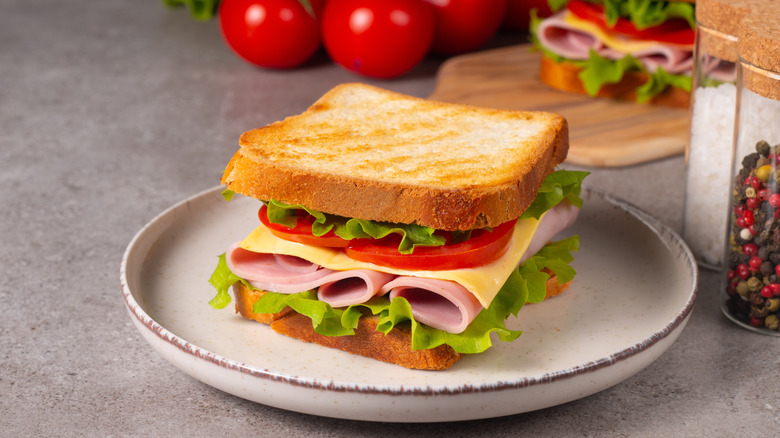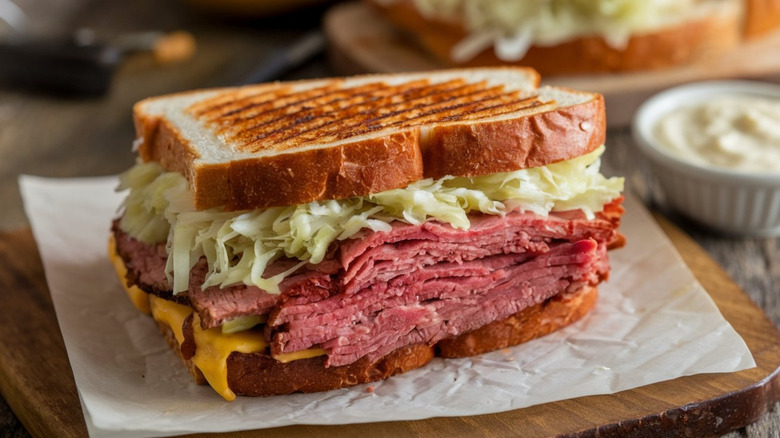Why You Should Keep Your Sandwich's Main Ingredient At The Bottom
On the surface, making a sandwich seems like a fairly simple task. After all, it's just stuffing your favorite foods between two pieces of bread, right? While this assessment is essentially correct, it's also more complicated than that. You might be able to get away with building your sandwich willy-nilly if it's something simple like a PB&J or a classic turkey and cheese with mayo. However, anything more complicated than that requires a little bit of planning to prevent your sandwich from falling apart immediately after you've taken the first bite.
As it turns out, building a sandwich properly has as much to do with architectural components as it does with flavor. A sandwich with good structural integrity is much easier — and therefore more pleasant — to eat. That means your densest ingredient, which is also usually the main flavor, should go on the bottom of your sandwich to anchor everything in place. For instance, if you're making a chicken cutlet sandwich with tomatoes and pesto, you'll want to place the cutlet itself on the bread first and stack the rest of the ingredients on top of it.
This technique prevents your sandwich from becoming top heavy while also ensuring the main ingredient is also the main flavor in each bite. Of course, if your sandwich doesn't have an easily identifiable main flavor, you can simply build your sandwich starting with the most structurally stable ingredient. A roasted veggie sandwich, for example, might start with a few slices of fried eggplant or a grilled portobello.
Building your sandwich from the foundation up
When considering the finer points of sandwich architecture, it's only sensible to start with the bread. Whether you place your heaviest ingredient at the top, bottom, or center of your sandwich, it's doomed from the start if you're relying on the wrong type of bread. Hefty, saucy ingredients like meatballs in marinara easily soak through delicate white bread, but nestle nicely inside a sturdy hoagie roll, with room to spare for cheese and roasted veggies. Similarly, whisper-thin prosciutto might get lost inside fluffy kaiser roll, but work perfectly on soft whole grain, or even rolled into a crepe with a schmear of brie.
These combinations also make for a better texture, which is the secret to making incredible sandwiches. Not only does paying attention to texture yield a more interesting culinary experience, but also helps hold everything together. For instance, if you start with grilled chicken and want to add tomatoes, placing lettuce or bacon between them adds a new textural element that will help keep everything together.
Additionally, seasoning every layer of your sandwich is often the difference between a quick, disappointing meal and a new recipe that makes your weekly grocery list. While it's almost a no-brainer to season cooked elements of your sandy or coat your bread with some sort of dressing or sauce, hitting your veggies with a touch of chili lime, garlic salt, or even just good ol' salt and pepper intensifies flavors and helps everything taste cohesive.

